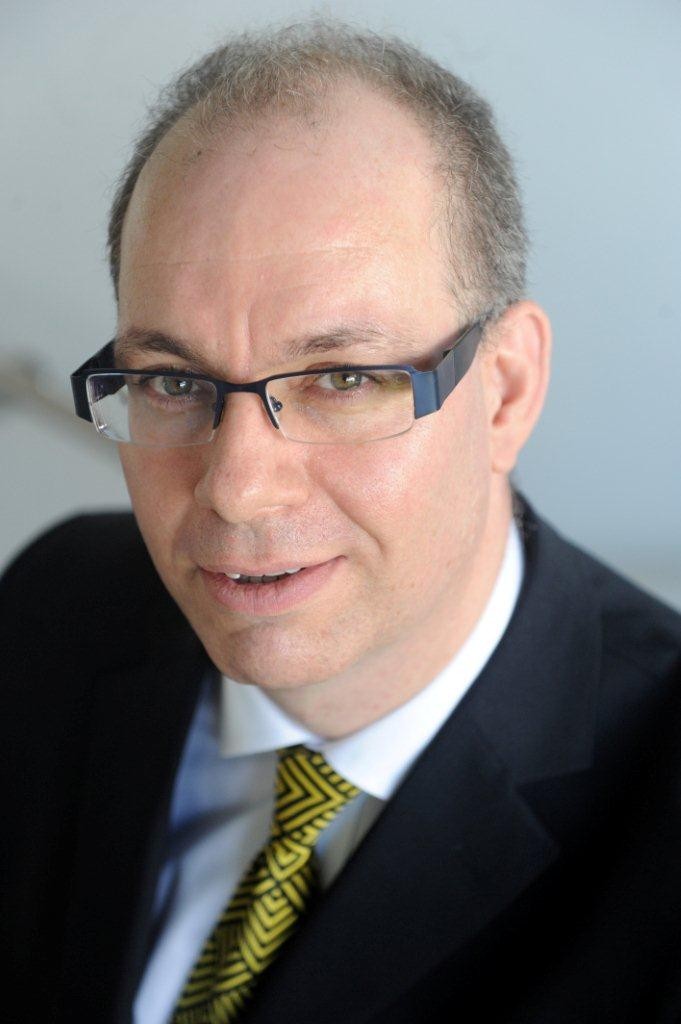Digital Health
Professors Christopher James and Jeremy Wyatt, joint directors of the Institute of Digital Healthcare
Published January 2011

Digital Healthcare is a term for new ways of treating patients that make use of digital technology. The term is necessarily broad as this innovative approach is being applied to a very wide range of problems; these problems range from monitoring patients who are being treated from home to helping doctors get better at prescribing treatments.
For those who have had enough of digital evangelism that is more about hype than hope, the team are well aware that some ideas might not work in practice. A previous project, for example, attempted to use the instant messaging service MSN messenger to put nurses in direct contact with patients. It didn’t work - they found it was a very slow method and that it was hard to know when patients were telling the truth. The patients felt vulnerable and exposed and the pilot was cancelled.
Finding the right ‘intervention’ is partly about using the appropriate technology and partly about going after holistic solutions - this is not about replacing the same types of care with digital alternatives but offering new types of care that are only possible because of more sophisticated technology. Traditionally doctors focus on acute conditions, reacting to patients' needs as they get increasingly ill. Those interested in digital healthcare argue that new models of care should look at preventing problems by providing continuous care. There is a clear need to move care out of hospitals and into the home, encouraging the patient to take responsibility for their own improvement and setting up effective ways of managing long-term conditions. Professor Christopher James, chair in Healthcare Technology and joint director of the Institute of Digital Healthcare (IDH) at the University of Warwick, has a background in biomedical engineering and was brought on board to help manage the overall development of the IDH strategy with a technological perspective. He conceptualises this shift as a move away from just curing illness to protecting wellness: “The delivery of healthcare can sometimes be ineffectual and reactive in nature. It is desirable to develop and promote a more proactive and efficient healthcare delivery.”
That might sound like a noble goal but can we afford it?
“It really is more for less,” explained Jeremy Wyatt, Professor of eHealth Innovation at the University of Warwick for two and a half years. “The initiatives need to be cost-saving if they are to be deemed successful.” The Institute of Digital Healthcare has recently been set up by WMG, in collaboration with WMS and NHS West Midlands, so that the progress that has already been made in this area can feed into successive projects. They are keen to make sure that their research meets stringent academic criteria while simultaneously looking far beyond the boundaries of academic institutions. “Collaboration is vital in this area,” continues Prof Wyatt, “If we are to produce effective and new models of care we first of all need to understand the current care on offer. The kind of disciplines involved include clinical practice, health technology, sociology, cognitive science and change management.”
They are currently prototyping the Buddy Radio - a radio that can be used by people suffering from longterm conditions to let their healthcare professionals know how they are feeling. It uses the same technology as a mobile phone but the team found that having it packaged as a radio, where the patient adjusts dials according to how they were feeling, made it more effective as a communication tool. Getting the design right was crucial - it needed to be an attractive addition to the bedside so that it didn’t end up gathering dust in the bottom of a wardrobe. Repacking mobile technology is something that often provides innovative solutions - people who need to regularly update nurses of their condition, for example, may find it most useful to have the necessary mobile technology built into something they wear everyday, like a watch or a necklace.
The Institute is also dedicated to looking at completely new technologies. Prof James' background in Biomedical Engineering means he is equally happy designing algorithms and experimenting with new technologies, and has established a Neural Engineering lab within WMG to continue that aspect of his research. A previous project he worked on, looking at how you could control a vehicle through thought alone, sparked a great deal of interest in the mainstream media. One Christmas the production team from 'James May’s Big Ideas' dropped a wheelchair off at his house and asked him to develop the technology so that the presenter could direct the wheelchair around a track with his “mind”. Luckily his daughter, who is used to taking part in such experiments, agreed to be his test pilot. She trained herself to move the wheelchair just by thinking about 'left' or ‘right'. Sensors attached to her head were arranged to pick up the electromagnetic activity produced by brain activity which occurs in a slightly different place depending on which direction you are thinking about going in. With training, she learned how to control the wheelchair with 80 per cent accuracy. Success is not guaranteed however - James May only managed around 60 per cent, which as Prof James pointed out, “is not much better than chance!”
Within the wider healthcare technology remit, the range of applications that could be delivered is seemingly endless. Prof James has tentatively grouped them into four general areas of interest, but also points out that each have core technologies and techniques that cut across all four. The need for data-processing platforms for data collection, storage and decision support, for example, are going to be applicable in almost all cases. As previously mentioned, repurposing existing technologies for use in a new context is crucial for making the most of economies of scale.
The four areas of interest are
- Clinical health monitoring (heart rate monitoring, blood-pressure, etc.)
- Wearable monitoring (for example, remote monitoring of diabetes patients through a body-worn device)
- Unobtrusive monitoring for functional health (movement sensors or cameras detecting activity and inferring wellness) and
- Rehabilitation and assistive technology (communication aids, digital implants, etc.)
These categories are neither mutually exclusive nor exhaustive but just provide a useful framework for making sense of the range of tools being advanced.
Clearly this area of research is expanding. The more complicated the problems that the researchers seek to solve, the more people that need to be involved, the more factors that need to be taken into consideration. Once the technology has been developed there is a whole other set of challenges relating to making sure the patients make best use of them. The Institute of Digital Healthcare is keen on training people up who can go on to develop new initiatives and implement them.
 Professor Christopher James is chair in Healthcare Technology at the University of Warwick, UK and is Director of the Institute of Digital Healthcare. Prof James is a biomedical engineer and his research activity centers on the development of biomedical signal and pattern processing techniques, as well as the use of technological innovations, for use in advancing healthcare and promoting wellbeing. Neural Engineering forms a large part of his work, as to date his work has concentrated on the development of advanced processing techniques applied to the analysis of the electromagnetic activity of the human brain, primarily in Brain-Computer Interfacing. Prof James has published over 150 papers in neural engineering in varied biomedical engineering journals and refereed conferences.
Professor Christopher James is chair in Healthcare Technology at the University of Warwick, UK and is Director of the Institute of Digital Healthcare. Prof James is a biomedical engineer and his research activity centers on the development of biomedical signal and pattern processing techniques, as well as the use of technological innovations, for use in advancing healthcare and promoting wellbeing. Neural Engineering forms a large part of his work, as to date his work has concentrated on the development of advanced processing techniques applied to the analysis of the electromagnetic activity of the human brain, primarily in Brain-Computer Interfacing. Prof James has published over 150 papers in neural engineering in varied biomedical engineering journals and refereed conferences.
Whilst at Warwick, Professor Jeremy Wyatt was Director of the Institute for Digital Health Care and professor of eHealth Innovation. Before moving to Warwick, Prof Wyatt directed the Health Informatics Centre and eHealth Research Group at Dundee University, was R&D director at NICE and NHS academic adviser for knowledge management and visiting professor in the Department of Primary Care in Oxford. He helped found the Cochrane Collaboration in 1992 and founded the Cochrane Effective Practice & Organisation of Care group in 1994 and chaired AIME, the European Society for AI in Medicine 1991-1998. He now holds the Leadership Chair in eHealth Research (Health Informatics) at the Leeds Institute of Health Sciences.
